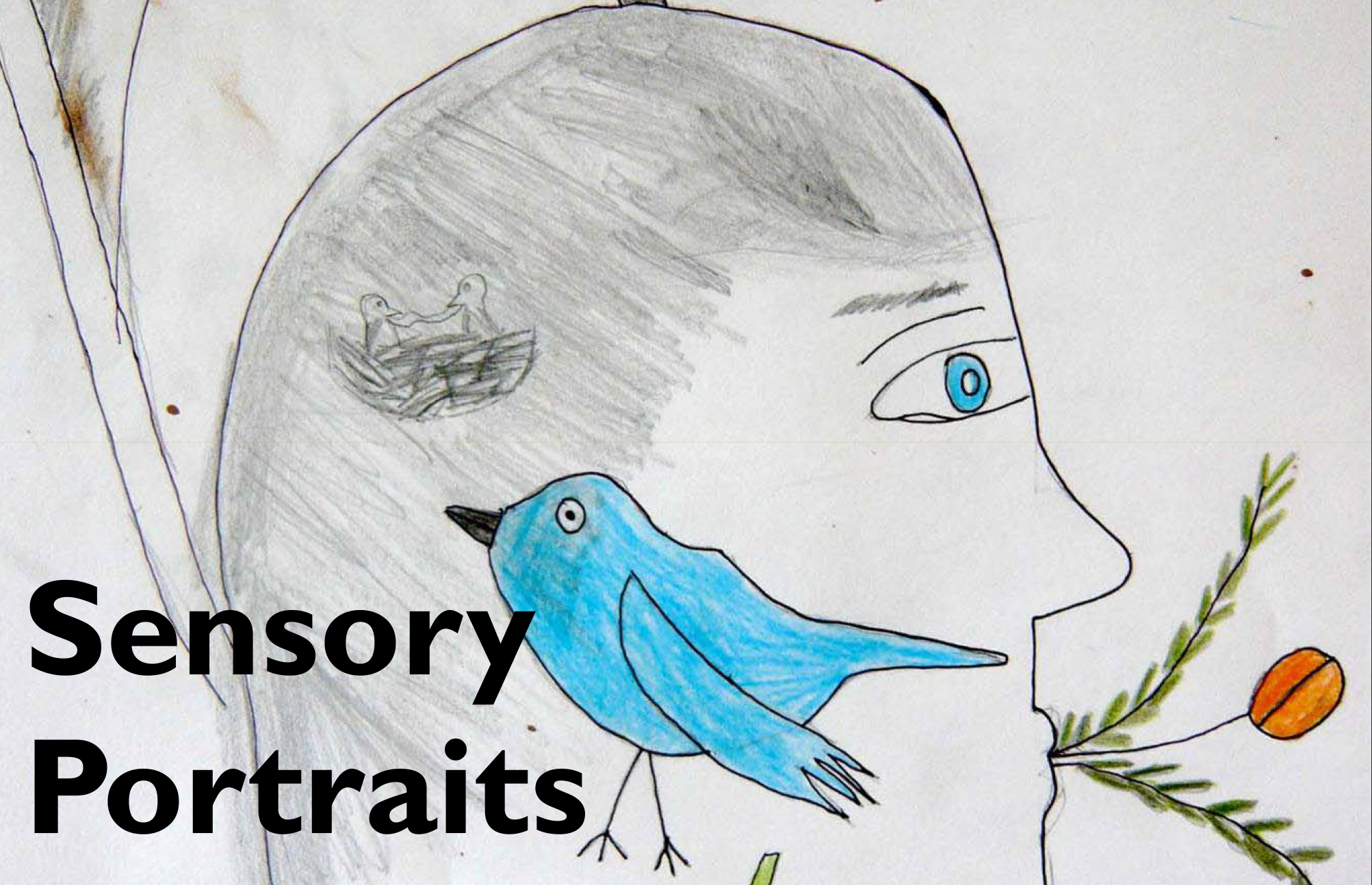In this activity, participants create portraits of one another which incorporate the sensory experience of a given natural location. In doing so they practise portraiture and drawing, but also creatively reassess the world around them.
The Activity
Artform/Type of Activity
- Drawing
- Observation
- Collage
Objectives/Outcomes
- Observation and personal response to nature based on the senses
- Understanding and interpreting a natural site
- Developing confidence in the visual arts
- Mapping
- Portraiture
- Collaborative working
Materials Required
- For preparatory session: images of the works of Arcimboldo, 16th Century artist – these can be sourced from the internet
- Small sketchbooks/ notebooks/ pencils/ pens to record impressions at the site
- Small sealable plastic bags (to collect materials on site)
- Plastic gloves/ hand wipes
- (Scissors/ knives for collecting materials on site, as necessary)
- Natural objects (to be collected on site for the workshop)
- Camera/s (to take photographs of the creatures/ plants observed on site)
- Images of the creatures/ plants observed – enough for all participants (to be printed prior to collage workshop)
- (It may be necessary to augment your own photographs with images – appropriate to the site – downloaded from the internet)
- Cartridge paper (A3 at least)
- Pencils/ rubbers/ sharpeners/ scissors/ glue
- Felt tip fine liner pens
Space Requirements
Preparatory session: classroom or workroom
Visit to natural/ wildlife site
Collage activity: classroom or workroom with sufficient table top surface for all participants
Activity Instructions
- (Prior to activity): it may be useful and stimulating to introduce participants to the work of Arcimboldo, the 16th Century painter who created portraits and likenesses out of flowers, vegetables and suchlike.
- Site visit: Participants are to be paired together and encouraged to explore the site making mental and actual notes (in sketchbooks or notebooks) of sensory impressions – sights, sounds, smells and textures, and relate those to what their partner has seen/ heard/ smelt, and find objects that may look like parts of their partner’s eyes/ hair/ lips etc.
- The group take photographs of plants/ creatures/ birds/ insects/ the ground/ stones etc to be printed and used back in the classroom or workroom.
- Participants can also collect some natural samples to supplement the photographs. Clear rules will be:
- clear guidance to be sought from nature expert on plants that can be harmful to humans (eg Hogweed – Heracleum) or that are protected and should not be disturbed
- only pick a small part of any plant
- no living creatures
- take care around sharp objects, thorns, stinging plants etc: gloves if necessary
- small items like petals, blades of grass, tiny pebbles etc will be much more effective in picture formation and detail – large items won’t stick and/or take up too much room
- In classroom/ workroom prior to collage workshop: print off photographs from site – enough for each participant. If necessary, augment these with relevant pictures from the internet.
- Collage portraits: each participant draws their partner’s profile. A/T/L instructs participants to draw as big as possible on the paper provided, leaving room for the hair. This is to be a line drawing, no features, no textures, no shading – a simple profile outline.
- Participants are then to look carefully at their partners and to think about filling in the portraits, creating the facial features in ways that echo the senses, and which – where possible – reflect the person portrayed. For example, the eye could be denoted by what the person saw, hence a wide picture of the site, or by colour, eg a blue eye could be blue sky, a dark brown eye could be a dark brown leaf or berry; the ear could be shown by what was heard, eg a bird, or by something that looks like an ear, eg a shell; the mouth could be denoted by something edible, or by petals, or berries; hair could be shown by grasses, or flowers, or smooth leaves or rough bark – all depending on the person portrayed.
- Participants can select from the range of images (which can be cut up, eg cutting pictures of daisies out of a field of grass), and the natural materials collected.
- Participants are to experiment with laying the images and materials on to the portraits to create the best effects and likenesses, prior to sticking things down.
Curricular Links
Links to Art and Design through: observation; use of materials; History of Art; mapping
Links to Science through: wildlife; biology; the senses
Links to Geography through: mapping, exploration
Links to Geography through: development of field skills and identification of the characteristics of specific areas
This resource was designed as part of the Green TV project.
PDF Work Sheet
See our A to Z of creative activity resources here.
Funded By
The creation of this resource was made possible by funding from the Heritage Lottery Fund.

